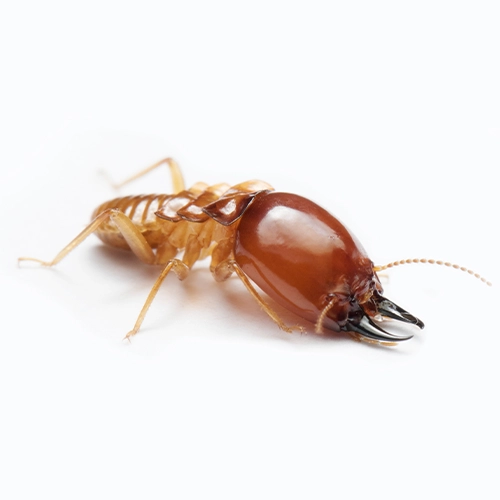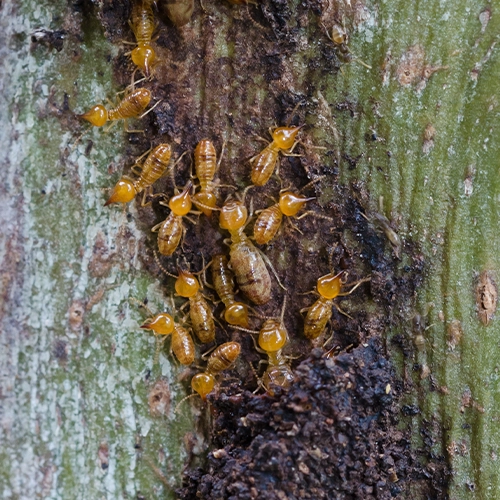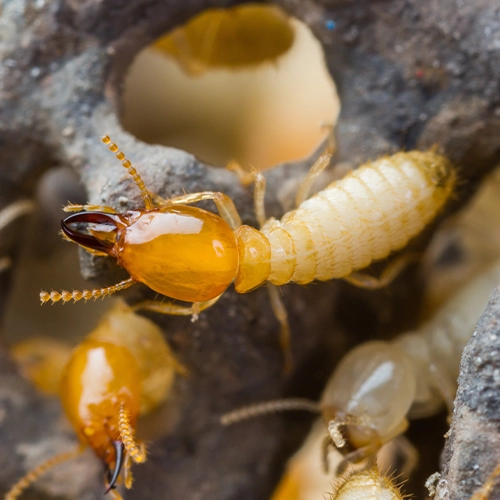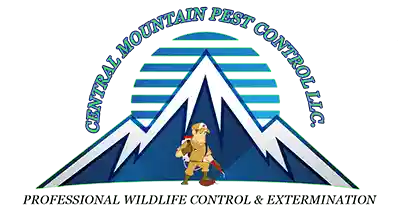A Deep Dive into Species, Risks, and Proactive Management Methods

Termites can be a serious menace, as they have the potential to cause significant and expensive damage, especially to structures and plants. Although they thrive well in warm and wet weather, some species do well in Colorado, which normally experiences cold and dry weather. To avoid structural damage to your property caused by these insects, it is good to have them removed as soon as they are initially noticed. Proper measures should also be taken to make sure that they never come back again. This article gives insights into different species of these pests, the risks of having them around, and actions you can take to get rid of them completely.
Understanding Termites
A termite is an insect belonging to the order isoptera or the termitoidae family and is characterized by the moniliform antennae and soft body. They are usually quite small and measure between 4 and 15mm. They have the analogous worker and soldier caste system, and most of these are blind because they have no eyes. Despite this, they are quite important in the ecosystem because they are crucial decomposers of decaying plant matter. They have the potential of changing soil characteristics and biodiversity, courtesy of the mounds they form.
There are over 2,000 species but only 50 of them are common in North America. Some of these can invade your home and cause many destructions because they love feeding on wood. Since this can be quite expensive, immediate removal of these pests is needed upon sight.
Why Termites Love the Climate and Environment in Colorado!
To start with, it is good to state that termites do not do so well in regions with dry and cold weather like Colorado. Instead, they love warmer and more humid areas. However, this does not mean that they do not pose a threat to residents, because they are quite adaptable and can survive in distinct regions. The only thing here is that they are not as prevalent as in other states with more favorable conditions.
Their prevalence can vary depending on the time of the year. There are some months that they will be in plenty and in lower numbers in some other days. For instance, during the spring and summer, their activity increases, leading to also an increase in the reproduction rates.
During such times, you may notice a couple of swarms around. This is quite different compared to the winter and autumn seasons where their activity seems to be lower, due to decreased temperatures. In such seasons, they can only be seen in heated buildings. Therefore, you should also be vigilant during the colder days of the year.

Another thing that plays a role in their population in the state is altitude. This is because an increase in altitude leads to decreased temperatures, which as aforementioned, can have significant effects on the activity level of termites. In lower altitudes like plains and foothills, you may experience high infestations because of the higher temperatures. However, in higher elevations like mountain areas, their prevalence will be quite low, especially in the outdoors. In these areas, they can survive well in the indoors with heated conditions.
Common Termite Species in Colorado
Out of the 50 species in North America, only a couple can be found in this state. This part of the article looks at exactly that.
Western Subterranean
This is one of the most common species in the state. It can be recognized from its white or cream color but its soldiers have a rectangular-shaped head that is orange in color. It has a pincher-like mouth that it uses to fight off any intruders. It can be found in distinct areas such as on dead wood and fallen trees.
Arid-Land Subterranean
Unlike the western subterranean, this one is not that common in this state. However, it still finds it way around. It can be recognized from its dark brown or black color. It has wings that are almost whitish in color and has brown veins on the fore part. It is quite common in Rocky Mountain areas and high altitudes.
Eastern Subterranean
While the western subterranean is the most common species in Colorado, this one is the most common in the whole of United States. Though not as prevalent in this state, you can still find some traces of this species. It is brown to dark in color and has a rectangular head with long mandibles. It creates nests on food sources like wooden fixtures.
Drywood
As the name suggests, these ones love infesting dry wood. Their straight bead-like antennae helps set them apart. They live deep inside wood, a situation that can make it hard for you to spot them, unless they swarm or when you are doing some repair job.

Signs you are dealing with an Infestation
Now that you have a proper comprehension of the different species available, it is now time to look at several things that can signify you are dealing with an infestation. One thing that can indicate you are dealing with a large number of these insects is seeing swarmers anywhere on your property. Swarmers come about because of the reproduction process, after nymphs develop into swarmers with wings. Therefore, if you happen to seeing flying insects with wings, it could indicate that the termites are now looking to form large colonies in your property.
Another thing you may notice is the presence of mud tubes. These pests build this so they are able to travel through their colony. This is one of the most common infestation signs as they usually form them on the wooden structures of your house. Beneath the tubes, you may notice that they have eaten hrough the wood. Therefore, wood damage is something else that can indicate their presence. The damage can even cause sagging structures, a situation that means you have a huge problem to deal with.
Potential Risks of Having Termites at Home
These pests can be quite risky to have them roaming around your Colorado house. The greatest risk entails structural damage. They love feeding on wood meaning that when they infest your property, they will start eating through wood.This causes extensive damage to your wooden structures. The big issue is that they do not even need a lot of time to cause damage. A couple of weeks on your property is enough to cause destruction to support structures, flooring, and wooden beams. In such a situation, you These pests can be quite risky to have them roaming around your Colorado house. The greatest risk entails structural damage. They love feeding on wood meaning that when they infest your property, they will start eating through wood. This causes extensive damage to your wooden structures. The big issue is that they do not even need a lot of time to cause damage. A couple of weeks on your property is enough to cause destruction to support structures, flooring, and wooden beams. In such a situation, you.
DIY Management Strategies
If you are not dealing with large colonies of termites, you may first want to try out DIY management techniques to deal with them before paying for professional assistance. One example method you can try is using a vinegar solution. You can make this by combining white vinegar with equal parts of water. Afterward, spray this mixture on them to help deter. It is good to note that home remedy solutions like vinegar, clove oil, orange oil, and diatomaceous earth will not kill the termites but will instead repel them.
Reasons to Hire Experts
Dealing with large colonies of termites is quite daunting because you have to ensure you eliminate everything because failure to do this can cause them to come back. Since you do not want to be always worrying about these pests, while you have other important things to focus on, it is best to leave this job to the professionals. Pest control companies have the needed skills, tools, and experience to deal with these nuisance insects completely. They do this for work meaning they have gathered years of practice. They will implement the latest science-based methods and technologies to do the job safely so you can remain with a property that is rid of any termites. They will also advise you on how you can prevent aninfestation from happening ever again in your home.
Preventive Measures You Can Take
They say prevention is better cure. This old adage happens to apply too when it comes to dealing with termites. Since you have already seen and understood their risks, you do not want these pests anywhere near your property ever again. Lucky for you, you can do a few things to ensure this does not take place.
One such thing you can do is treating the wood using termite-resistant paint or other chemicals. This will deter these insects from boring through the wood, meaning you will not have to deal with damage. In regards to repellents, it also makes sense to use termite-resistant materials when building your house.
This may include composite or pressure-treated wood, which are less susceptible to potential damage. When building, you should also ensure there is no soil to wood contact by using other materials like metal or concrete to create the barrier. This is a great idea because termites can easily access you wooden structures if they are already in contact with the ground.

It is also a great idea to inspect your property on a frequent basis. If you notice any signs, it is best to have the problem handled by experts before it gets to be a huge infestation. Doing this can help you save so much money on future repairs.
Termites can be a great risk when they come and set up their habitat at your house. They cause great structural damage through their activity of feeding on wood. Since you do not want to experience this, it is a good idea to have them removed as soon as possible before they become a greater hazard. You can do this by yourself or call in professionals to help you out. The latter is recommended because experts have the needed knowledge and expertise to remove these insects and ensure they will never come back.
If you think termites are causing you problems in Colorado Springs, CO or anywhere in Teller County or El Paso County, please do not hesitate to
contact us today! We will help resolve your problem quickly, safely, and at affordable rates.
